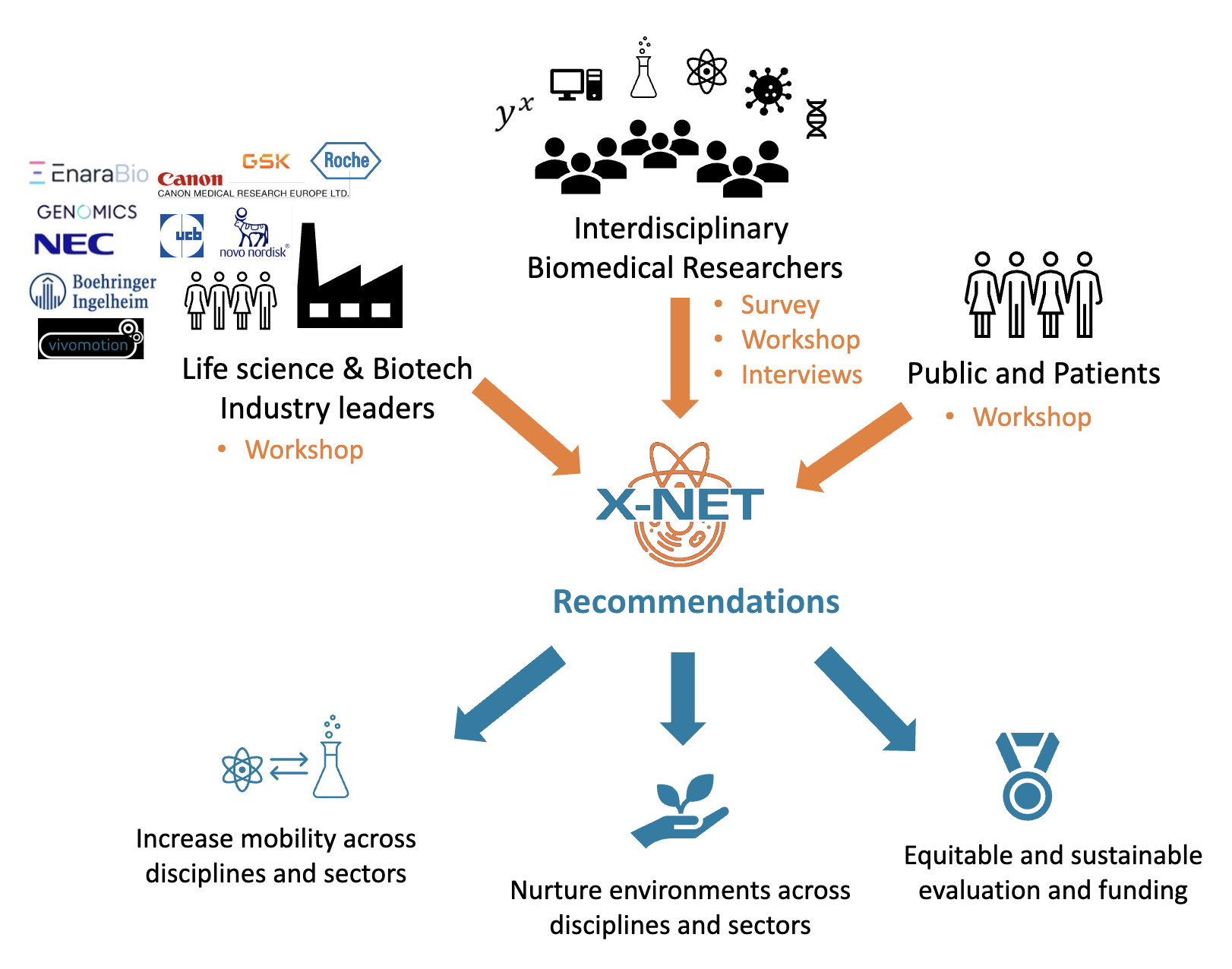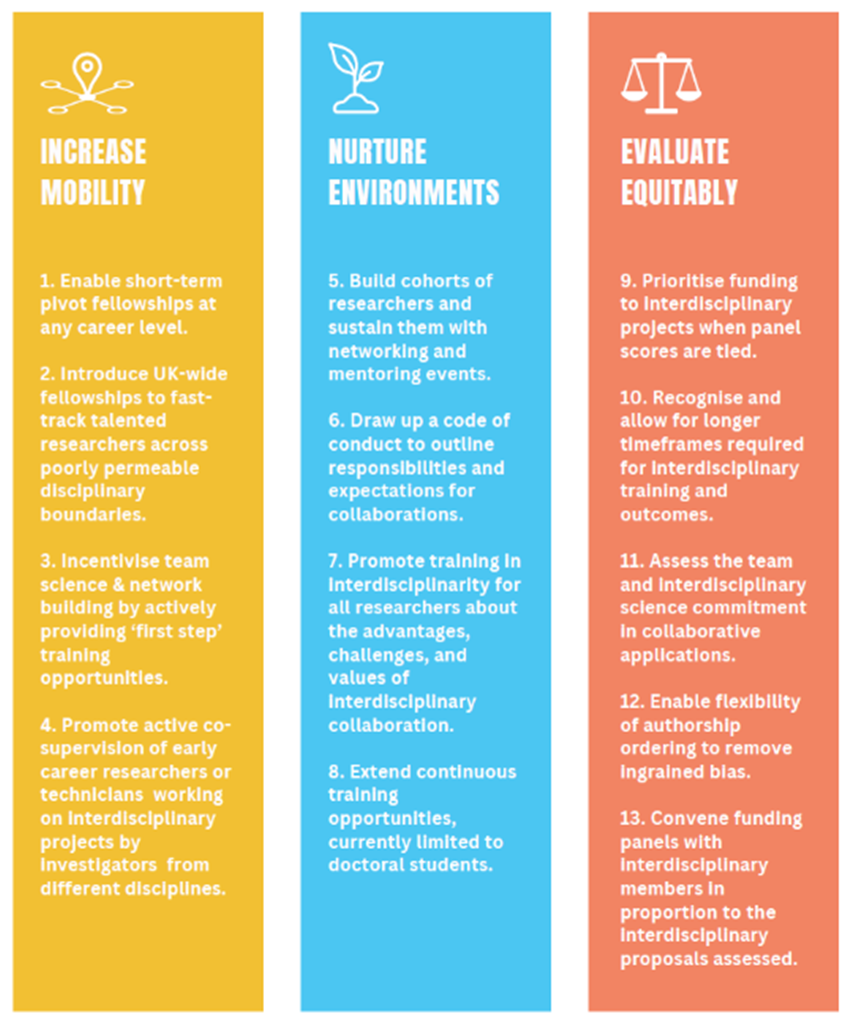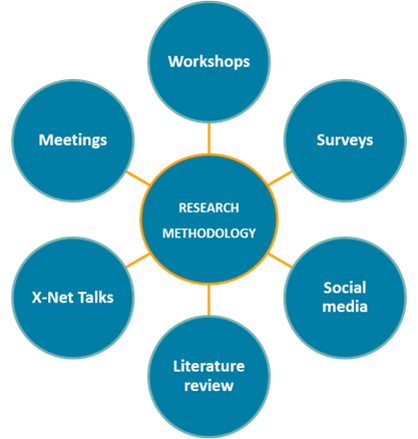The X-Net recommendations report was released in March 2024, after 2 years of research by the network on obstacles faced by interdisciplinary researchers, especially those early in their career. The network’s evidence-based report represents a policy roadmap that has been presented to funding bodies and policy makers seeking to help improve the working environments of researchers crossing disciplines.
A. Background
Interdisciplinary research brings many opportunities to tackle complex and global societal challenges such as multifaceted problems in medical science or energy and climate change. However, interdisciplinary researchers face a series of obstacles that can make their work overwhelming and disheartening. X-Net recommendations stem from evidence given by interdisciplinary researchers in academia and industry (at different career stages), and the advice of PPI groups. Three sets of recommendations highlight the need to:
(1) increase mobility across disciplines and sectors
(2) nurture environments across disciplines and sectors
(3) equitable and sustainable evaluation and funding

B. Summary of recommendations
Dismantling barriers to interdisciplinary research requires a methodical, coordinated approach from universities and funders, and the support and commitment of the research community. Recommendations in this report, based on evidence gathered by X-Net (2022-2023), are intended to enable universities and funders create the conditions needed for interdisciplinary research to succeed. X-Net suggests 13 recommendations divided into three sections: (1) increase mobility of interdisciplinary researchers, (2) nurture the environment of interdisciplinary researchers and (3) evaluate equitably.

C. Methodology
X-Net combined different research methods to address the barriers and to explore the enablers affecting interdisciplinary research in UK:
- Workshops: X-Net organised three workshops, (1) with interdisciplinarians from academia, (2) with interdisciplinarians from industry, (3) with PPI (patient and public involvement).
- Surveys: conducted to gather data from interdisciplinary researchers on the barriers or incentives for interdisciplinary research and to receive advice on proposed recommendations.
- Social media: used to gather evidence, establish connections and to spread awareness of the network. X-Net established online presence with a website, X (Twitter, @XNetbio), LinkedIn, a Slack channel, a YouTube channel, and a newsletter.
- Documentation: a literature review and the examination of other documentary sources were ongoing throughout the project, to understand scientific interdisciplinarity in different contexts, including a critical evaluation of all information gathered.
- Interviews: as part of the X-Net Talks, series of structured interviews to gain information about the personal and professional experiences of interdisciplinarians with diverse career paths who are at different career stages.
- Meetings: members of the X-Net steering group and the managing team met regularly in order to plan, organise, control and supervise the activities carried out by the network. Team members also had meetings with science policy makers, funders, professionals working for the government, and interdisciplinary leaders to gain their insights about X-Net’s different areas of work.


